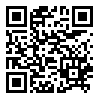مجله جهانی جراحی پلاستیک
مجله جهانی جراحی پلاستیک
پنجشنبه 11 دی 1404
[Archive]
دوره 12، شماره 1 - ( 1401 )
جلد 12 شماره 1 صفحات 19-12 |
برگشت به فهرست نسخه ها
Download citation:
BibTeX | RIS | EndNote | Medlars | ProCite | Reference Manager | RefWorks
Send citation to:



BibTeX | RIS | EndNote | Medlars | ProCite | Reference Manager | RefWorks
Send citation to:
Loghmani S, Loghmani A, Loghmani S, Zarei M, Maraki F. Lessons from Self-Assessment of Post-Rhinoplasty Complaints; Analysis of 192 Candidates of Secondary Rhinoplasty. WJPS 2023; 12 (1) :12-19
URL: http://wjps.ir/article-1-1022-fa.html
URL: http://wjps.ir/article-1-1022-fa.html
Lessons from Self-Assessment of Post-Rhinoplasty Complaints; Analysis of 192 Candidates of Secondary Rhinoplasty. مجله جهانی جراحی پلاستیک. 1401; 12 (1) :12-19
چکیده: (3140 مشاهده)
Background: Rhinoplasty as the most common aesthetic surgical operations aims to correct deformities of the different structures of the nose with each case its own challenges. We aimed to highlight the importance of self-assessment for rhino surgeons.
Methods: This retrospective descriptive study was done on 192 patients in Ordibehesht Hospital, Isfahan, Iran from April 2017 to Jun 2021. candidate for secondary rhinoplasty, with mandatory aesthetic and optional functional purposes, having previously undergone rhinoplasty with the same or another surgeon. Patients with initial rhinoplasty by the first author were assigned to group 1 (n=102) and the patients who were operated by the other surgeons were in the group 2 (n=90). Data were collected using an author made checklist divided into three parts: overall demographic questions, questions about the patients’ aesthetic and functional complaints and objective evaluation by the surgeon.
Results: The most frequent reported complaints led to their current rhinoplasty were about the nasal tip with 161 cases (83.9%), upper nasal part with 98 cases (51%) and mid-nose (middle nose) with 81 cases (42.2%). Besides, respiratory problem was observed in 58 patients (30.2%). Surgeon's skill was significantly associated with occurrence of these two complaints; so that these two complaints were more common in group2 than group1 (P value <0.05).
Conclusion: Such assessments resulted to improve the surgical outcomes due to finding the more prevalent problems in own patients than the other surgeons’ patients and determining the reasons that leads to change the techniques with regard to the researches and consulting with the colleagues.
Methods: This retrospective descriptive study was done on 192 patients in Ordibehesht Hospital, Isfahan, Iran from April 2017 to Jun 2021. candidate for secondary rhinoplasty, with mandatory aesthetic and optional functional purposes, having previously undergone rhinoplasty with the same or another surgeon. Patients with initial rhinoplasty by the first author were assigned to group 1 (n=102) and the patients who were operated by the other surgeons were in the group 2 (n=90). Data were collected using an author made checklist divided into three parts: overall demographic questions, questions about the patients’ aesthetic and functional complaints and objective evaluation by the surgeon.
Results: The most frequent reported complaints led to their current rhinoplasty were about the nasal tip with 161 cases (83.9%), upper nasal part with 98 cases (51%) and mid-nose (middle nose) with 81 cases (42.2%). Besides, respiratory problem was observed in 58 patients (30.2%). Surgeon's skill was significantly associated with occurrence of these two complaints; so that these two complaints were more common in group2 than group1 (P value <0.05).
Conclusion: Such assessments resulted to improve the surgical outcomes due to finding the more prevalent problems in own patients than the other surgeons’ patients and determining the reasons that leads to change the techniques with regard to the researches and consulting with the colleagues.
| بازنشر اطلاعات | |
 |
این مقاله تحت شرایط Creative Commons Attribution-NonCommercial 4.0 International License قابل بازنشر است. |


